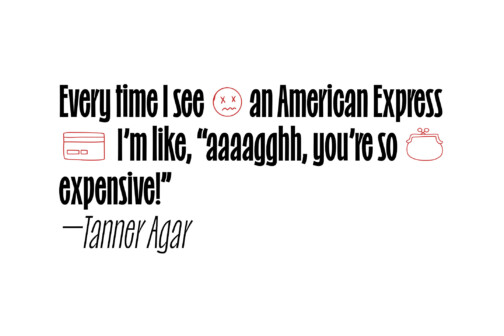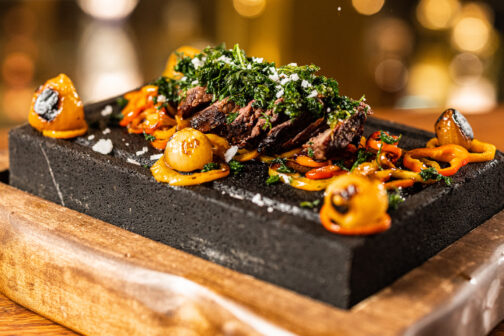Welcome to In the Weeds, our series in which Dallas restaurateurs explain behind-the-scenes aspects of the food service business—parts of the job that customers never see.
Today we’re talking about the hidden costs of cooking food and serving drinks, the expenses that diners don’t know about when they go out to eat.
Meet our experts:
- Sawsan Abublan, co-owner of fast-casual chain Shawarma Press
- Tanner Agar, co-owner of upscale restaurant Rye and cocktail bar Apothecary
- Jon Alexis, restaurateur behind TJ’s Seafood, Malibu Poke, Escondido, and Ramble Room
- J.R. Muñoz, owner of the bars Will Call and Elm Street Saloon
- Khanh Nguyen, restaurateur behind ZaLat Pizza and DaLat
- Brent and Juan Reaves, co-owners of Smokey John’s Bar-B-Q
I asked them this question because I have seen many diners on social media and review sites like Yelp complain that, say, they shouldn’t pay $20 for a burger because ground beef doesn’t cost $20. Everyone knows that restaurants spend money on food and labor, but they also have dozens of additional expenses many customers take for granted.
When I asked our expert panelists about this issue, it was hard to get them to stop talking. Their answers show the wide range of expenses that you don’t see on your plate. Read on, and you’ll never look at the numbers on a menu in the same way. (My comments and subject transitions are in italics.)
Read part one: What Must Happen Before a Restaurant Can Open?
Part two: How Do Restaurants Choose Their Locations?
Trash Bags, Broken Plates, and the Damn Gloves
Brent Reaves: It’s darn near a thousand dollars a month just to dump the trash. Trash is so high because we run through so many cases of brisket, sweet potatoes, we do everything fresh. We’re using tons of boxes and cases of items. We have that trash dumped at least three times a week.
Tanner Agar: Credit card fees. That is the biggest expense I don’t think new restaurateurs see coming. You get charged way more than what they advertise. And then there’s always some kind of fee. Every time I see an American Express, I’m like, “aaaagghh, you’re so expensive!” I would love to have an ATM in front of our restaurant and say, hey, we’re cash only. We could make so much more money on that model. But it’s a terrible idea.
Juan Reaves: We’ve gotten away from working with delivery services. The consumer loves the convenience, but they don’t realize how much that hits the restaurant. You’re driving prices up by using those guys. The ones that take 28 to 30 percent, consumers are thinking, well, I didn’t have to go out. It came to my house, it was great, I paid a little extra. But that little extra doesn’t go to your restaurant. That goes to the service provider.
Tanner Agar: Breakage is one people never think about. People say, “I hate it when I go to a restaurant and I get non-stemmed wine glasses.” Okay. Well, which part of the wine glass is always the part that breaks? I have a scar on my hand from one of them. When I go to very high-end restaurants, when I see just how thin and delicate their wine glasses are, I think, wow, it must cost a fortune have these!
Jon Alexis: To-go packaging is insane. Both for the volume of to-go and the actual cost of the packaging. All the low-quality [packaging] got sold out really fast. My feeling is, my food’s nice, we put it in good stuff, but it got to where we were using the nicest takeout containers available, and my managers told me, this kind is the only one that was available.

Sawsan Abublan: Packaging increased dramatically, and not just the packaging that we put the food in, but things that you use to make the food, like gloves.
Khanh Nguyen: Has anyone told you about the damn gloves?
Sawsan Abublan: Gloves’ prices have quadrupled, and stayed, they didn’t drop.
Khanh Nguyen: A case of gloves was like $1,000.
Tanner Agar: When you sit down [as a customer], I have to pay someone to wash and polish anything that you touch, whether it’s laundry that goes to a company or if it’s my guys who are handling it. If you sit down, touch your silverware, and then walk out of the restaurant, you cost me money, because all of that stuff is going to be replaced. Plus you’ve got all of your software fees for every computer in the building, I think $65 dollars a month per computer, plus an overall fee, and there’s a few hundred dollars a month to have tablets, which we had to pay for software on.
Ever-Changing Food Costs
Jon Alexis: It’s little things every week. Right now, sriracha and straws. Couple weeks ago, I think eggs doubled without any warning. The hidden cost is just the spikes in necessary items. Eggs double for a week? No, you really can’t raise prices. By the time you reprint your menu, it’s death by a thousand profit cuts.
Khanh Nguyen: Limes, we have to deal with limes all the time. There are these gigantic spikes that limes go through. You can’t pass that on to the customer. You can’t say, we gotta charge you $10 for this lime today.
Tanner Agar: Limes love to triple in price! But I cannot under any circumstance serve you a Tito’s and soda and then say you can’t have a lime.
J.R. Muñoz: There’s something that’s going to cost a thousand dollars every week. AC units going out. We had that problem last week. I had guys out here nine o’clock at night on a Saturday with flashlights up on the roof trying to get it done. I’m having an AC issue over there too [at Elm Street Saloon]. Geez, dude, in the last month we’ve had the walk-in cooler break down, we’ve had the lowboy deli sandwich refrigerator break down. These are things that are pretty new!
Tanner Agar: The door to my walk-in fridge opens 100 times a day. How often you open the fridge at your house?
Khanh Nguyen: As I learned at DaLat, the ACs you have on top, those are ticking $15,000 time bombs. If you’re making $50,000 a year, and you’ve got to eat the $15,000 HVAC unit that year, that’s gigantic.
Sawsan Abublan: If the AC breaks down, or the water heater breaks down, now to repair that equipment, it’s three times, four times as much to pay for repairs as it used to be.
J.R. Muñoz: Luckily, when you’re in this business, you got connections. When you’re in the bar business, you know a guy.
Brent Reaves: Don’t have a fire like we did! Our insurance went up five times what it was.
Jon Alexis: I don’t know how insurance works, but it seems like they’re trying to make up for the catastrophic tornado and freeze losses that they suffered in Dallas. The rates are going through the roof.
Brent Reaves: There is so much insurance now. So you’re gonna get liability, you’re gonna get your umbrella policy, you’re gonna get workers’ comp. Then there, is I forgot the name of it, but in case one of your employees does something, any type of sexual assault, conduct.
Juan Reaves: It’s protection from being sued because of the environment that your employees create. Sued by the customers or each other.
Sawsan Abublan: You have employees who don’t look at food as merchandise. When you work at a clothing store, you can’t walk out with a T-shirt. But when you’re working in a food environment, people think, oh, what’s a sandwich? It’s human nature. But food is merchandise, it has a dollar sign attached to it.
Juan Reaves: We’re buying hats and shirts for our team members. Normally you get a couple shirts, you get a hat, and after a few months maybe you get another one. Well, when you run through people that work for a month or a week or two weeks, we’re running through uniforms left and right. Between training, orientation, give them a shirt, give them a hat, and they don’t last more than two weeks—there’s a cost that we never really experienced before until now, and now it’s significant.
Tanner Agar: I’ve had customers steal art off the wall. We’re closing down and we’re like, hey, what happened to that picture? We used to have these gold peacock mint dishes in our bathroom and five different ones got stolen. So we just said screw it, we’ll put a bowl that we don’t care about that has mints in it. A $0.99 IKEA bowl. If you have nice stuff people will steal it.
Author







